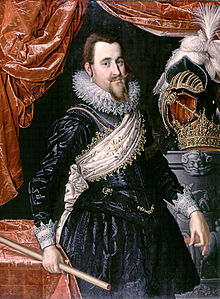Danish-Hanseatic Rivalry

The Danish-Hanseatic Rivalry describes the rivalry between the German Hanseatic League and the Kingdom of Denmark, which lasted from the late 14th century up until the dissolution of the Hanseatic League in the 1660s. It consisted of many direct wars and proxy wars. Though both states were generally competitors across the 3 centuries the two entities were competitors in the Baltic Sea, there were periods of time where the two states also coexisted peacefully, such as during the reign of Margaret I.[1][2][3]

The rivalry began due to Denmark's attempt to become a major player in Baltic politics under Valdemar IV. Though he failed to seize Scania and Gotland in the Danish-Hanseatic War (1361-1370), his successors continued to put Denmark in a position to challenge the union. During the age of the Kalmar Union, Danish kings successfully expanded their domain into Northern Germany, directly threatening Hanseatic cities like Lubeck.
The Hanseatic League was a major player in Danish politics in the 16th century as well. They supported Swedish independence on numerous occasions, and funded rebels during the Count's Feud in an attempt to further weaken Denmark. By the 1600s however, Denmark had centralized and developed into a power Dano-Norwegian state, and had surpassed the Hanseatic League in power. They monopolized the Baltic trade through the Oresund tolls, and Christian IV, King of Denmark, was likely the richest man of his time.[3]

The Hanseatic League on the other hand had been in decline throughout the 16th century. During the 30 Years War, the Hanseatic League was commonly found torn between a power struggle between the Holy Roman Emperor and the Northern Protestants. Stralsund in particular suffered from this fate, as they were annexed by their Swedish "defenders" during the war. Much of the population of these Hanseatic cities were also ravaged by the war. Magdeburg for example was infamously sacked in 1631, and lost 80% of its population. Though the Hanseatic League was never formally disbanded, it faded out of relevance following a failed attempt at rekindling the League in 1669.
List of Conflicts[edit]
- Danish-Hanseatic War (1361-1370)
- Danish-Hanseatic War (1426-1435)
- Dano-Swedish War (1501–1512)
- Engelbrekt rebellion
- Swedish War of Liberation
- Count's Feud
- Northern Seven Years' War
References[edit]
- ^ Dollinger, Philippe (1970). The German Hansa. Internet Archive. Stanford, Calif., Stanford University Press. ISBN 978-0-8047-0742-8.
- ^ "Hanseatic League - Medieval Trade, German Cities, Baltic Sea | Britannica Money". www.britannica.com. Retrieved 2024-01-08.
- ^ a b Lockhart, Paul Douglas (2007). Denmark, 1513-1660: the rise and decline of a Renaissance monarchy. Oxford (GB) New York: Oxford University Press. ISBN 978-0-19-927121-4.
